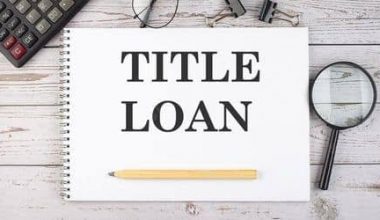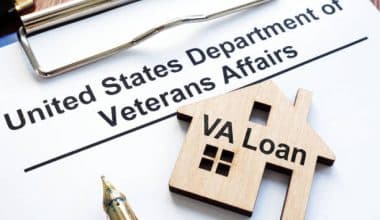A line of credit vs a credit card belongs to the revolving credit category. Both allow you to borrow up to a set limit without requiring you to take out a loan right away. You have complete discretion over when and how much money you withdraw from your account. You can borrow as much as you need without incurring any additional fees as long as your balance does not exceed your credit limit. Read further to learn more about the differences between a personal line of credit vs a credit card. We also added some differences between a business line of credit vs a credit card to the article so as for you to get a better insight into everything. Enjoy the ride!
What Is a Line of Credit?
The Consumer Financial Protection Bureau (CFPB) states that the line of credit, often known as credit lines, serves a similar purpose to credit cards. A credit limit is the maximum amount of money that a lender will allow you to borrow when you create a line of credit. Lines of credit come in a wide variety of forms. Some, like those used for businesses or home equity, are designed for very specific purposes. Personal credit lines, on the other hand, are typically used for more general purposes. Credit lines backed by the government work in their own unique ways as well.
The Consumer Financial Protection Bureau (CFPB) explains that, unlike credit cards, personal line of credit is accessed by depositing checks or making wire transfers to a bank account. It may also be possible to make withdrawals at a branch or via a mobile app. The CFPB also reports that many financial institutions stipulate a checking account be opened before extending credit. One such cause is withdrawal techniques.
The amount of available credit decreases as you make purchases. The amount of available credit could be reduced by any interest or fees incurred. However, your available credit will increase as you repay your debts. The Consumer Financial Protection Bureau adds that you should budget for a monthly bill and a minimum payment. Most credit cards and personal loans have expiration dates. Furthermore, the CFPB cautions that you may incur fees with each transaction made through the account.
How Does a Line of Credit Work?
To withdraw funds from your line of credit, the lender will provide you with checks. You can have funds deposited into your bank account by submitting a transfer request in person, over the phone, or via the Internet banking portal of your financial institution. Overdraft protection is a feature that allows you to set up your bank or credit union to automatically use your credit line whenever your checking account falls below a certain threshold.
There are two types of credit lines: secured and unsecured. HELOCs are one type of secured loan that can be taken out against the value of your home. A fixed-rate option may be available for all or a portion of your HELOC debt from some banks. Draw periods, or the time during which you can tap into your HELOC for borrowing purposes, are also common. After the draw period ends, you may be expected to make a lump sum payment, or you may be offered a payment window.
A personal line of credit (PLOC) is an unsecured loan used for personal purposes. A checking account with the bank or credit union from which the credit line is extended may be required for approval. After borrowing money, you’ll start getting bills and will have to pay at least the minimum each month. Depending on market conditions, the interest rate may go up or down.
When Should You Choose a Line of Credit?
If you or your family need access to a bigger sum of money than a credit card will allow for, and you’d want the option of paying it back over time, a line of credit may be the way to go. A line of credit provides money for large, unpredictable needs, such as an ongoing home improvement project or quarterly payments for a child’s college education.
What Is a Credit Card?
There are a wide variety of financial institutions that provide credit cards. According to the CFPB, a credit card company’s decision to grant a credit line is based in part on the applicant’s creditworthiness. Lenders may also take creditworthiness into account when making decisions regarding credit limits and interest rates. If your credit application is successful, you will be issued a credit card. You will receive a statement at the end of each billing cycle detailing your card usage, the monthly minimum payment due, and the total amount you owe.
The monthly balance is the standard by which minimum payments are determined. If you’re late on a payment, your account could be hit with a fee equal to a certain percentage of the original total. The percentage could be based on the total amount owed, though. Furthermore, overdue balances may be factored into required minimum payments.
Reimbursing your purchases and any applicable fees or levies will increase your available credit. The Consumer Financial Protection Bureau suggests that you may be able to avoid paying interest on purchases by paying your monthly bill in full before the due date each month. You should check your card’s terms and conditions to see whether there is a grace period for purchases.
How Does a Credit Card Work?
Account statements are sent out to cardholders at the beginning of each billing cycle. If the full debt is paid by the due date, many credit cards waive the interest fee altogether. If the cardholder makes a payment that is less than the whole amount due during the grace period, interest will begin to accrue on the unpaid balance immediately. Every billing cycle, cardholders are obligated to pay at least the minimum payment by the due date or risk incurring late penalties and maybe a penalty APR.
When you charge items to a rewards credit card, you may be eligible for bonuses and other perks. Your purchases could earn you cash back, points toward vacation, merchandise, gift cards, and more, depending on the type of card you use.
When Should You Choose a Credit Card?
Using a credit card for regular purchases can help you build credit and earn rewards, and it can also protect you from fraud while shopping online. Credit cards might be a cheaper financing option than a line of credit because many of them do not charge yearly fees. If you pay your account on time and in full every month, you can avoid interest charges. If you need extra time to pay off your balance, a 0% APR credit card may be a good option.
Line of Credit vs Credit Card
The most obvious distinction between a personal line of credit vs a credit card is that while a credit card is linked to and gives you access to a line of credit, a line of credit can be opened without a credit card. A personal line of credit vs a credit card is essentially the same thing, however, lines of credit are not always credit cards. The following are the differences between a personal line of credit vs a credit card:
#1. Eligibility
Eligibility is one of the major differences between a personal line of credit vs a credit card. Most financial institutions make it simple to apply for and receive a credit card. Unsecured personal lines of credit are offered by a select few financial institutions. To apply for a line of credit at a bank, you normally need to already have a checking, savings, or investment account with the institution. It may be more difficult to obtain a line of credit if you don’t live in a state where a bank has a physical branch.
#2. Credit Terms and Limits
Although conditions differ depending on the lender, the APR for a line of credit is frequently lower than the APR for credit cards. Another difference between a credit card and a line of credit is that the latter often has a higher credit limit. Due to these benefits, credit lines may be more appropriate for costly purchases that can be paid off gradually.
#3. Ideal Use
Idea use is also one of the major differences between a personal line of credit vs a credit card. Having access to a significant amount of accessible credit makes a personal line of credit ideal for making large purchases that you otherwise might not be able to afford. You can utilize a line of credit for whatever you need it for, from making repairs to your home to paying for your wedding.
#4. Time Frame
The length of time you anticipate needing access to the funds makes a difference when deciding between a credit card and a line of credit. Keeping your credit card active is important for your credit score even if you don’t use it frequently. Having numerous credit card accounts (which lenders use to gauge how much credit you’re using and how well you manage debt) can improve your credit usage ratio. However, some people decide to cancel their credit card accounts when the disadvantages become too great.
A line of credit, on the other hand, allows you to take out money over a certain period of time up to a certain limit. Since interest accumulates, monthly installments are preferable, but you may have anywhere from 10 to 15 years to repay the loan. Time frame is one of the major differences between a personal line of credit vs a credit card. that you must never neglect when considering which one to go for.
#5. Cost
One of the major differences between a personal line of credit vs a credit card is cost. The interest rate on a personal line of credit is often lower than the rate on a credit card, and borrowers may be able to get even better terms if they already have an account with the lender or if they use collateral as security. Credit card interest rate savings require extra forethought. You can benefit from a credit card with a 0% interest rate during the promotional period by paying the balance in full each month.
Credit cards with richer rewards and features often come with a heftier annual fee. Interest is typically the only expense associated with a personal line of credit, and there are typically no other ongoing or transaction fees.
#6. Access and Rewards
Using a credit card to make everyday transactions is a time and effort-saving convenience. There is typically a grace period during which you won’t be charged interest, which isn’t the case with lines of credit. Moreover, unlike credit lines, many credit cards offer rewards for spending, often in the form of cashback or other benefits.
#7. Collateral Requirements
Collateral requirement is one of the major differences between a personal line of credit vs a credit card you must always put this into consideration. When you get a significant line of credit from a bank, they may insist on collateral for certain types of lines of credit. Non-retirement stocks and bonds, cash in a certificate of deposit or savings account, or home equity can all serve as collateral. Offering collateral, even when it’s not necessary, can ease the qualification process and open the door to much larger credit lines or lower interest rates.
When compared to other forms of credit, credit cards offer a wider variety of unsecured credit limits. Only secured credit cards, intended for people who are just starting out or restoring their credit, demand a down payment or other form of collateral.
3. Business Line of Credit vs Credit Card
You, the business owner, may be confused about the distinction between a business line of credit vs a credit card. Do you require both? Which situation calls for which?
You can think of a business line of credit vs a credit card as twin financial products. They have numerous similarities yet are technically two different items. They’re compatible and can get along great. A business line of credit is often utilized for short- to medium-term financing of pricey products you want to pay for over time due to the high limits. It’s possible, for instance, that you’ll require restaurant supplies worth around $50,000. If you need more money than your credit card can cover say, $25,000, the line of credit will get you there.
However, perhaps you simply need to invest an additional $1,000 in advertising and can do so with a 30-day grace period. There is no interest for a certain length of time when using the business credit card. You could also have additional time to make purchases before interest is imposed on your balance if you utilized a credit card with a 0% APR introductory period.
The benefits to small businesses are not to be overlooked, either. There is a business line of credit that includes a rewards program, but it’s not common. It’s common practice for business credit cards too. And if you plan to do a lot of flying around for work, a business travel credit card could be the way to go. They provide enticing advantages and come packed with features that can reduce those expenditures. Keep in mind that a business line of credit can be more challenging to qualify for than small business credit cards because they provide larger limits.
Line of Credit vs Loan
There are a variety of situations in which a loan could be preferable. You can borrow only the exact amount you need at the outset, rather than leaving yourself with a revolving line of credit. And you can plan your finances with the certainty of having regular monthly payments to make. However, it’s easy to rack up a line of credit vs loan debt by paying the bare minimum each month and letting interest accumulate. Make sure you can afford to make the payments before committing to any plan. The following are the differences between a line of credit vs loan:
#1. Accruing and Paying Back Interest
When you take out a personal loan, you’ll have to pay back the principal plus interest within a certain time frame. However, with a credit line, you won’t have to pay interest until you make a withdrawal, and then you’ll only pay interest on the amount you’ve borrowed.
#2. Access to Funds
A line of credit allows you to borrow money and make periodic repayments over a certain period of time. This might be helpful for large projects like home renovations when the estimated costs may change over time. It might save you the trouble of having to track down an additional funding mechanism in the event of unexpected expenses.
#3. Qualifying for a Line of Credit vs Loan
Since good credit is typically required for approval, those with less-than-stellar credit may find it challenging to apply for a line of credit. You might be able to get a personal loan even if you have less-than-perfect credit, but you should be aware that the interest you pay could be significantly higher.
The Similarities Between a Line of Credit vs Credit Card
An application detailing your assets, income, and debts is the first step in obtaining either type of financing. Your credit report will be requested and considered by the lender as part of the application process for financing. Other similarities between a line of credit vs credit card include the following:
- Your credit line, or the maximum amount you can borrow, will be established in advance.
- There will be an impact on your credit rating, credit usage, and credit history.
- You’ll have immediate access to the money, so you can utilize it for big purchases or emergencies.
- You’ll have access to a variety of borrowing opportunities, such as secured credit (where collateral is placed as security for the loan) and unsecured credit (where security is not provided). There are plenty of financial institutions to pick from that typically provide both.
Does a Line of Credit Affect Your Credit Score?
You’ll want to know how opening a new line of credit may affect your credit score before making any significant changes. Here’s how a credit line influences your score:
- New inquiry.
- Credit mix.
- Amounts owed.
- Payment history.
- Payment history.
How Is a Line of Credit Similar to a Credit Card?
Both a credit card and a line of credit belong to the revolving credit category. Both allow you to borrow up to a certain limit without forcing you to take out a loan right away. You have complete discretion over when and how much money you withdraw from your account.
Is There a Downside to a Line of Credit?
As soon as money is borrowed from a line of credit, interest begins to accrue. Use a credit line if you need money for an emergency but don’t have enough in savings. High-interest rates, fines for paying late, and the temptation to spend more than you have available are all possible drawbacks.
Does Having a Line of Credit Increase Your Credit Score?
Your credit use rate can go down if your credit limit was raised. A higher credit score is possible if you maintain your current spending habits and punctually pay all of your bills each month. However, your credit rating may suffer if you use the additional funds to make large purchases.
What Is the Difference Between a Credit Card vs a Loan?
Most people take out loans to cover major expenses or to consolidate existing debt. A credit card is a type of revolving line of credit, which allows you to borrow money multiple times up to a certain amount. For this reason, using a credit card for routine, everyday transactions is highly recommended.
What Is the Main Advantage of a Line of Credit?
The primary benefit of a line of credit is the flexibility it provides in terms of borrowing and repayment.
Final Thoughts
A line of credit vs credit card provides a versatile option to borrow money. When choosing a borrowing option, it can be helpful to compare interest rates, fees, and repayment conditions. Make sure you’re applying for the choice that’s best for you based on your circumstances. It may also be good to consult a financial advisor.
Related Articles
- CREDIT LINE LOAN: What It Is And When To Use It
- PRODUCT LINE: Types, Examples, and How It Works
- BUSINESS LINE OF CREDIT: Meaning, How to Get It & Best Banks
- BEST CREDIT CARD COMPANIES IN USA: Top 10 Issuers
- HOW TO GET BUSINESS CREDIT: Step-By-Step Guide






